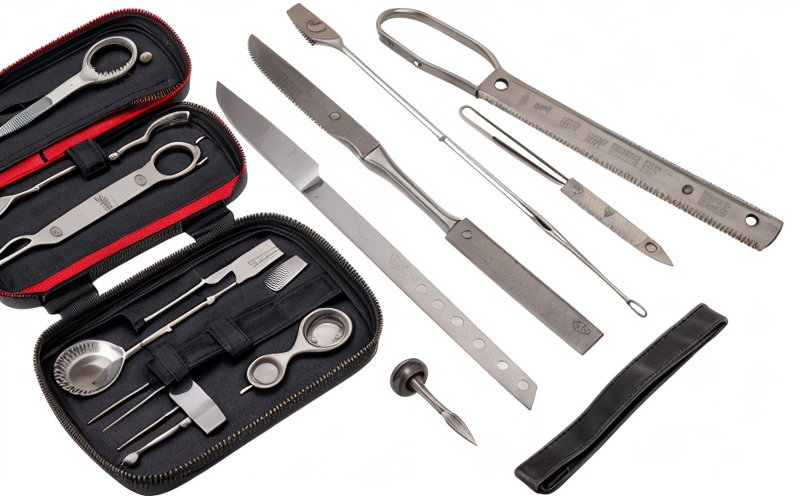Instrument Balance and Weight Distribution Testing
In the realm of medical device testing, ensuring that surgical instruments perform optimally is paramount. Instrument balance and weight distribution testing focuses on verifying that surgical tools are evenly weighted and balanced, which directly impacts their performance during critical procedures.
The importance of this test cannot be overstated for several reasons. A poorly balanced instrument can lead to reduced precision, increased fatigue for the surgeon, or even compromise patient safety. Surgeons rely on the instruments they use being consistent in weight and balance across various surgical environments and applications. This ensures that each tool performs reliably under different conditions.
The testing process involves multiple steps to ensure accuracy. First, the instrument is placed on a calibrated scale designed specifically for this purpose. The scale measures the total mass of the instrument and its individual components. Next, the balance point is determined by placing the instrument in various positions. This helps identify any asymmetry that could affect how the tool functions during surgery.
Once the basic measurements are taken, more detailed tests follow using specialized equipment like a torque tester or a precision scale. These instruments provide data on not just the overall weight but also the distribution of weight along the length and across different sections of the instrument. This information is crucial for ensuring that each component contributes equally to the tool's balance.
The testing standards used in this process are typically based on international guidelines such as ISO 13485:2016, which sets forth requirements for quality management systems for medical device manufacturing. Additionally, ASTM F972-21 provides specific criteria related to surgical instruments. These standards ensure that the tests conducted meet global regulatory requirements and provide consistent results across different laboratories.
For instance, when testing an endoscopic forceps, the balance must be such that it allows for precise gripping of tissues without causing unnecessary trauma. The weight distribution should ensure that the instrument can withstand repeated use in sterilization processes without deformation or loss of functionality. Similarly, for a scalpel blade, the balance and weight need to allow for easy cutting with minimal effort while maintaining accuracy.
The outcome of this testing is critical documentation that outlines all findings from the tests conducted. This includes graphs showing the distribution of weight along different parts of the instrument, measurements of torque at various points, and comparisons against accepted standards. This detailed report serves as evidence that each surgical tool meets stringent quality control measures before being made available for use in medical procedures.
By adhering to these rigorous testing protocols, manufacturers can ensure that their products not only comply with regulatory requirements but also provide safe, effective tools to healthcare providers worldwide.
- Accuracy: Ensures precise measurements of the instrument's weight and balance.
- Consistency: Provides uniform results regardless of environmental conditions or usage patterns.
- Precision: Allows for detailed examination of even minor imbalances that could affect performance.
- Reliability: Guarantees consistent outcomes across multiple tests on the same instrument.
- Compliance: Meets international standards and regulatory requirements for medical devices.





